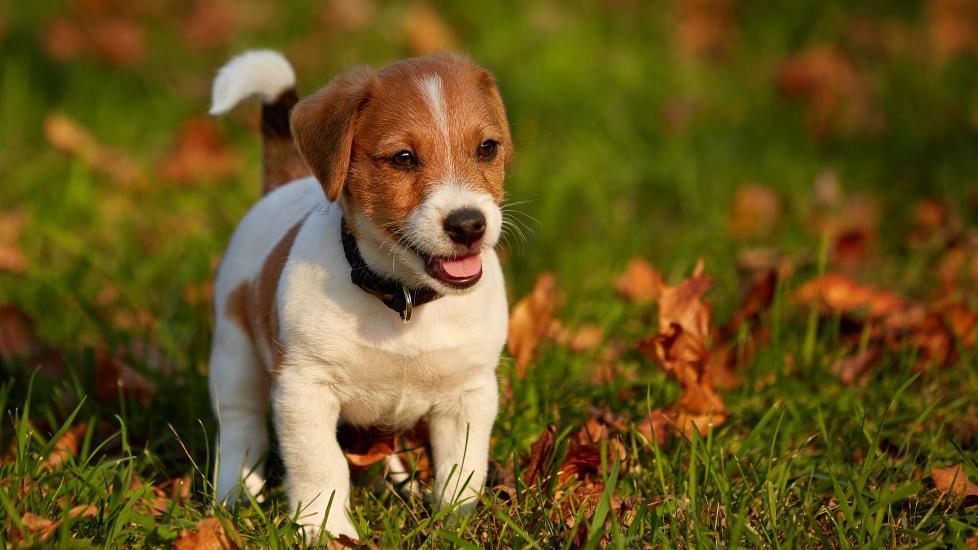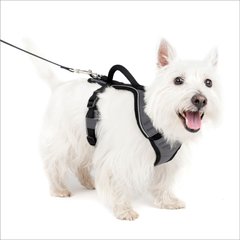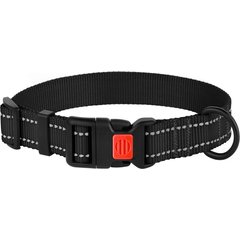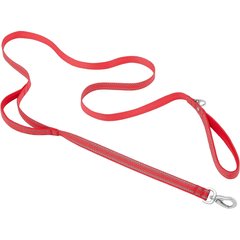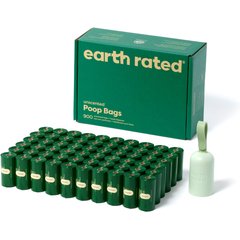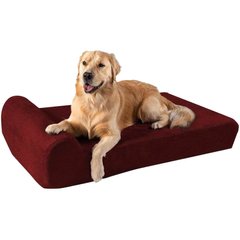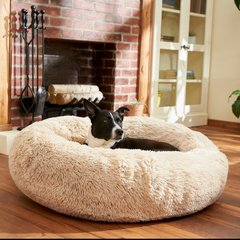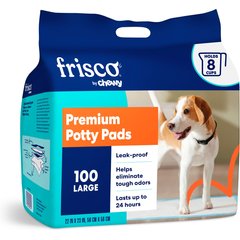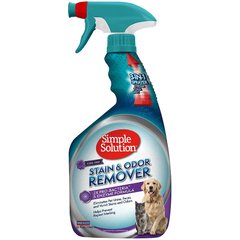New Puppy Checklist: Essentials for Your New Dog
iStock/iStock by Aleksey
You want to give your puppy a warm welcome to their new home.
However, buying necessities for your puppy can be overwhelming when you don’t know where to begin.
There are many things to know about caring for your new fur baby.
So let’s look at this puppy essentials list to help you in preparing to bring a new dog home.
Key Takeaways
- When prepping your home for a new puppy, make sure to establish care with a veterinarian.
- Stock up on different toys to keep your puppy mentally stimulated.
- Socializing your pup from a young age is a key factor in their growth.
Establish a Relationship With Your Veterinarian
Veterinary visits are crucial when it comes to caring for pets. Puppies should visit their veterinarian about every three to four weeks, says Dr. Efrem Hunter, DVM, MBA, a vet and director of veterinary and scientific affairs at Blue Buffalo.
Chrissy Joy, a celebrity dog trainer and host of The Dog Moms, has four pups of her own. She says that the first few veterinary visits are critical, even for pups who come from healthy moms.
“Meeting with your vet soon after bringing your puppy home is important,” she says. Puppies need essential vaccines that allow them to safely explore the outdoors and socialize with other pups. They’re also prone to parasites, which your vet can check for by using a fecal test and quickly beginning treatment if necessary.
Setting your puppy up with a qualified vet makes it easy to navigate their primary medical care. Consider these factors when choosing your vet:
-
Distance from home: You don’t want to drive far for routine visits, and you’ll want to be able to get to the vet quickly in case of an emergency.
-
Services provided: Make sure the vet offers the services you want, such as dental care, nutrition counseling, and spay and neuter surgeries. Having all services in one office can be a perk, though it’s not mandatory.
-
Experience: Choose a vet who routinely works with your pet’s breed. Additionally, fear-free certified vets can prevent and reduce fear, anxiety, and stress in pets.
-
The space: Ask whether you’re able to enter the examination room with your pet and if the office has separate waiting areas and rooms for cats and dogs, as this can help prevent potential stress and conflicts between them.
In talking with your vet, you’ll quickly understand that preventative care is key to your pup’s well-being, including keeping vaccinations up to date and protecting your precious pooch against fleas, ticks, and heartworms.
Puppy Food
You’ll need to have plenty of high-quality puppy food on hand for your newly adopted pup.
To help them power through their days, select a puppy food with a nutritional adequacy statement for growth or all life stages from the Association of American Feed Control Officials (AAFCO). You’ll find this info on the pet food label.
“It’s always a good idea to ask your vet for nutritional counseling, to make sure your dog’s specific calorie requirements and other nutritional needs are being met,” Dr. Hunter says.
If your puppy will be 50 pounds or more by adulthood, they may require large-breed puppy food.
Here are a few recommended large-breed puppy food brands:
Puppy Training Treats
Bonding over treats is also an important part of raising a pup.
“Rewards such as toys or tasty treats can help shape your dog into understanding how to volunteer good manners and behavior,” Joy explains. “We do this by rewarding our puppy soon after they offer the new behavior.”
Because they have a sensitive stomach, it’s not a good idea to share human food with your puppy.
Small treats or treats that break into smaller bites allow you to provide frequent rewards without overfeeding your dog. Dogs should get 10% or less of their daily calories from treats.
You’ll also want a few other essential puppy training supplies, such as a treat pouch and a six-foot training leash.
Water Bowls and Other Puppy Essentials for Home and Traveling
Packing bulky pet bowls can be difficult. That’s why you’ll want to invest in a bowl for home and one for the road.
At-home bowls come in a variety of materials, heights, and designs. For puppies, you’ll likely want a shallow one with a non-slip base.
Dog bowls made for on-the-go pet parents generally come in two designs—the collapsible doggy bowl and the doggy water bottle. Both designs are lightweight and portable, which makes them easy to take with you on walks, hikes, or to the park.
You’ll also need other essential puppy supplies for home or travel, such as:
Recommended Products
Toys for Your New Puppy
Providing both mental and physical stimulation is fundamental for the well-being of your new puppy.
Mental activities—such as puzzle toys and training exercises—are necessities for puppies to help keep their mind sharp and engaged. Physical activities like playtime and short walks will help burn off excess energy and promote physical health.
A balanced combination of these activities contributes to a happier and healthier pup and helps create a strong bond between you and them.
Don’t be afraid to experiment with new sounds and textures, Joy adds. “So many fun puppy toys offer crinkle sounds, squeaks, and funny noises that can be great exposure and used in playtime,” she says.
Avoid any toys that are too hard or are a choking hazard, and keep an eye out for any loose strings, stuffing, or squeakers. Make sure to promptly replace any toys that are falling apart or showing signs of wear and tear.
Watch your puppy closely after introducing a new toy to make sure they are not tearing it up and eating parts of it. The same goes for other household items, such as socks.
Puppies will teethe and mouth non-food items while they’re cutting in their new adult teeth. Make sure anything they’re chewing or playing with is not being eaten unless it is fully digestible.
You can try freezing peanut butter in Kong toys, as the cold may feel soothing on their gums—just make sure your peanut butter does not contain xylitol, which is poisonous to dogs.
Puppy Gates, Playpens, and Crates
Puppy proofing, gates, playpens, and crates are all important in keeping your puppy safe.
When choosing a crate, make sure that it’s appropriately sized for your puppy. This can help reduce the likelihood of potty accidents, as dogs instinctively avoid eliminating in their sleeping area.
“Ideally when crate training your puppy, you want just enough space for your puppy to sit, stand, and turn around to lie back down,” Joy says.
Some crates come with a divider that allows you to adjust the crate size with your puppy’s growth, such as the MidWest iCrate. It’s also collapsible and has a leak-proof removable tray.
Bedding for Your Puppy
Add to your list of puppy supplies a bed that your pooch can call their own, to promote a healthy sleeping schedule.
“A puppy’s sleeping area should be a quiet space where they can get used to sleeping apart from you and any distractions or activity,” Joy says.
Consider these factors when choosing a bed for your new puppy:
-
Durability. Pick a bed that can withstand puppy teeth. Joy says she prefers placing a puppy bed with minimal fillers in her pooch’s crate.
-
Ease of cleaning. Accidents are bound to happen. When they do, you’ll want a bed that you can wipe off or toss in the wash.
-
Size. Puppies come in all shapes and sizes; they should have a bed that suits their frame. Ali Smith, founder of Rebarkable and an award-winning force-free dog trainer, says her favorite for large-breed pups is the Big Barker. It comes with a washing machine–safe microfiber cover.
-
Design. Dog beds come in a variety of shapes and sizes to suit different dog preferences and needs. The design of the bed you choose will depend on your dog’s preferences and intended use. For example, if your puppy likes to curl up, a round doughnut-style bed might be a good option.
When your puppy can no longer stretch out or get comfortable in their bed, it’s time for a larger size.
Recommended Products
Puppy Pads
Puppy pads typically have a scent that attracts puppies, encouraging them to go to the bathroom on them.
They’re especially useful for puppy parents who live in high-rise buildings and may not have quick access to the outdoors.
“Ideally, you want to move this potty pad closer and closer to the door that you will use to take your puppy outside,” Joy says.
Don’t forget to add enzyme cleaner to your cart, too.
Recommended Products
Socialization for Your Puppy
Socialization is extremely important for puppies. It teaches them how to interact with new people and animals in a positive way while reducing fear and anxiety. All in all, socialization encourages the development of a happy, well-mannered dog.
The best time to start socializing your puppy is 3-12 weeks of age. This window of time is when they are developing core memories of new experiences. You can start with letting them see new people, children, people wearing hats, people on bikes, people in wheelchairs, or seniors with canes, for example.
Establish positive happy interactions with a variety of new people while they’re in this impressionable stage. See if the delivery person or mail carrier is willing to give your new puppy a treat.
After their first round of vaccinations, you can broaden their exposure to vaccinated pets of friends and family. While they’re young, let them meet a friendly cat or other species of pets they may later be exposed to, and try to make the interaction as positive as possible.
Talk to your veterinarian about when it’s safe to take your puppy to dog parks or other places where potentially unvaccinated dogs may be.
General exploration of the world with new sights, smells, and experiences will help socialize your puppy.
Here are a few activities to consider:
-
Observing other people and pets from a distance
-
Short greetings with other pets and people
-
Doggy daycare
-
Puppy kindergarten
-
Visiting dog-friendly establishments
Joy warns that rushing your puppy into a social situation before they’re ready can cause them to lose confidence. Instead, slowly introduce them to new stimuli using positive reinforcement techniques.
ID Tags and Microchipping
Identification devices are essential for dogs. If your puppy gets lost, these devices can help the person who finds them contact you. Two common identification methods are ID tags and microchipping.
ID tags attach to a puppy’s collar and list the pet parent’s name and contact information in case the puppy gets lost.
A microchip is a tiny electronic device that is implanted under your dog’s skin.
It’s about the size of a grain of rice and contains a unique identification number for your dog. This number is linked to your personal information, such as your name, address, and phone number.
If your dog ever gets lost, a veterinarian or animal shelter can scan the microchip and contact you to bring your pet home, even if their collar has slipped off.
To ensure peace of mind, discuss the advantages of microchipping your new puppy with your vet.
